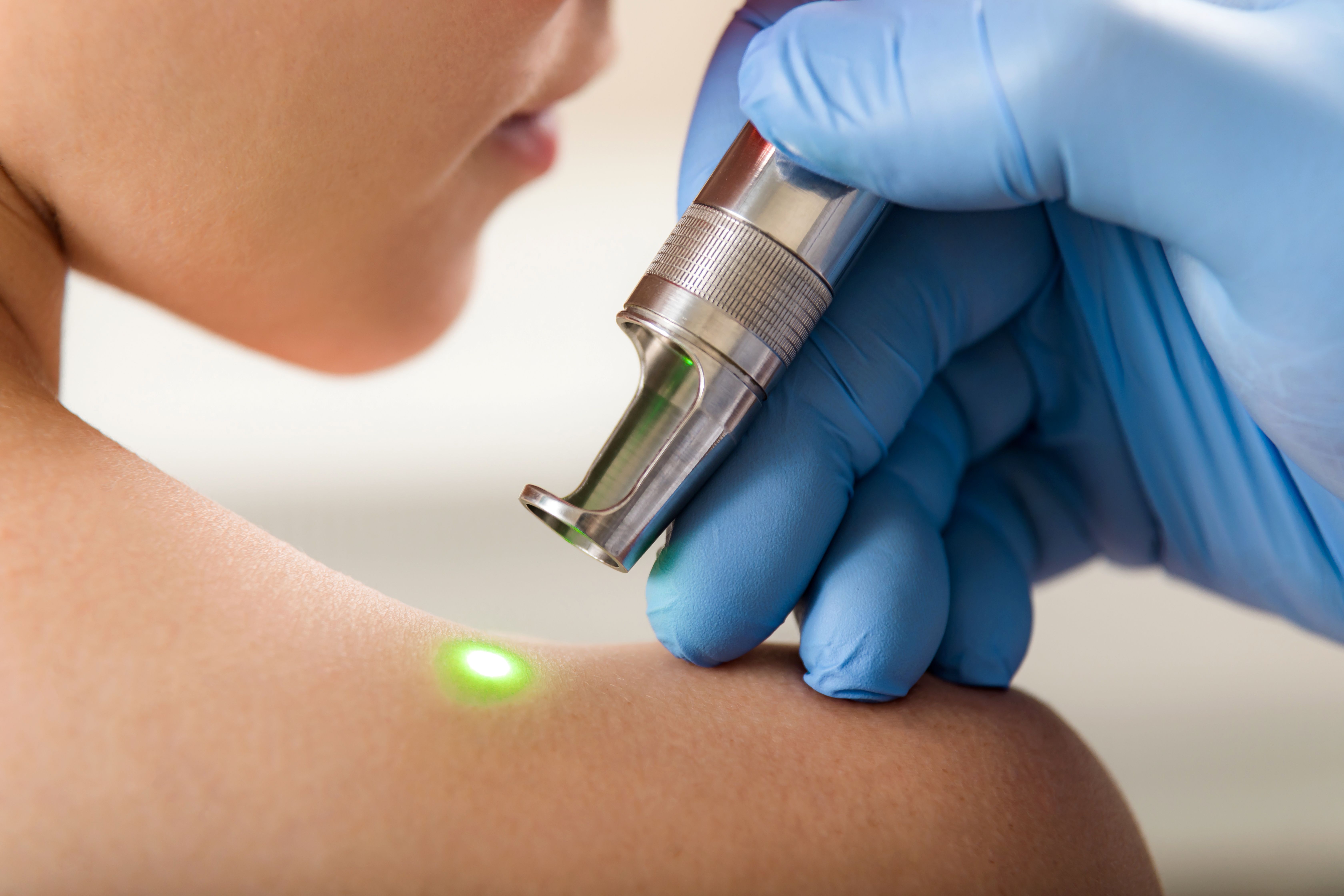- Acne
- Actinic Keratosis
- Aesthetics
- Alopecia
- Atopic Dermatitis
- Buy-and-Bill
- COVID-19
- Case-Based Roundtable
- Chronic Hand Eczema
- Drug Watch
- Eczema
- General Dermatology
- Hidradenitis Suppurativa
- Melasma
- NP and PA
- Pediatric Dermatology
- Pigmentary Disorders
- Practice Management
- Precision Medicine and Biologics
- Prurigo Nodularis
- Psoriasis
- Psoriatic Arthritis
- Rare Disease
- Rosacea
- Skin Cancer
- Vitiligo
- Wound Care
Article
Threadlifting: Leading noninvasive facelifting procedures
Author(s):
Dr. Monheit also tapes the face to remind the patient to restrain from facial motion.

Of the barbed threads available on the market today, Contour Threads (Surgical Specialties Corporation) seem to be the most popular in terms of durability and positive cosmetic outcome, according to one specialist.
"The Contour Thread can effectively elevate sagging tissues like the brows, cheeks and midfacial areas and easily reposition the mass and volume in these structures. They can be used to reshape the brow to create a prettier arch, as well as soften the appearance of jowling," says Gary D. Monheit, M.D., associate clinical professor of the departments of dermatology and ophthalmology at the University of Alabama, Birmingham, Ala.
Dr. Monheit says one of the key points that sets the Contour Thread apart from other threads on the market is its unique barbed design, providing an optimum holding and breaking strength not seen with other threads.
Approved by the Food and Drug Administration (FDA), the Contour Thread has needles attached to the suture materials for ease and convenience and a longer thread length for greater control and lifting. Another major benefit is its clear polypropylene material, which is not visible in light-skinned patients.
Comparing competitors
Aptos threads use three pathways to direct the threads through the subcutaneous tissue and SMAS of the midface to lift the malar fat pad and nasolabial fold.
According to Dr. Monheit, Aptos threads, which are not FDA- approved, have several disadvantages compared to the Contour Threads. He says the Aptos threads are free-floating, which may lead to unwanted thread migration; there can be thread splitting; and the longevity and tensile strength of the thread can be questionable.
The Articulus CT400 (the next generation of the Contour Thread) is the first knotless, fixated barbed suture that combines two unidirectional threads to elevate and fixate sagging facial tissue. Its new and improved suture technology boasts a reduction in procedural time and increases holding strength in the tissues. This thread is designed to complement the Contour Threads as an adjunct lifting procedure.
Thinking through the procedure
Dr. Monheit says that when marking the face of the patient just prior to the Contour Thread procedure, it is crucial to decide on the direction of elevation and visualize the result while palpating the skin.
The surgeon should plan from a fixed to a mobile area for optimal results, and also demonstrate to the patient the plan of the procedure.
"Advancing the Contour Thread is a simple four-step procedure consisting of incision, deployment of Contour Threads, the fixation of the proximal suture and suspension and then careful and purposeful contouring of the tissue," Dr. Monheit explains.
He adds that immediately postop, the patient will likely experience some swelling, redness, bruising, discomfort, tightness and pulling. These side effects are more or less expected but are mild and fortunately short-lived.
"The thread lifting procedure can be done in approximately one hour under local anesthesia and in an in-office ambulatory setting. The patient will not have any visible scars and will experience only a mild discomfort following the procedure. Furthermore, there are little or no dressings post-procedure and the physical recovery time is only a week. The patient, though, must contend with folds and dimples for two to three weeks to maintain corrections," Dr. Monheit tells Dermatology Times.
He explains that this is very different from the conventional facelifting procedures. Here, the procedure lasts anywhere from two to four hours, and sedation or general anesthesia is required. Patients will experience some postop pain and some scarring will occur. Patients must receive a helmet dressing and the recovery time is longer, lasting anywhere from two to three weeks.
Newsletter
Like what you’re reading? Subscribe to Dermatology Times for weekly updates on therapies, innovations, and real-world practice tips.















